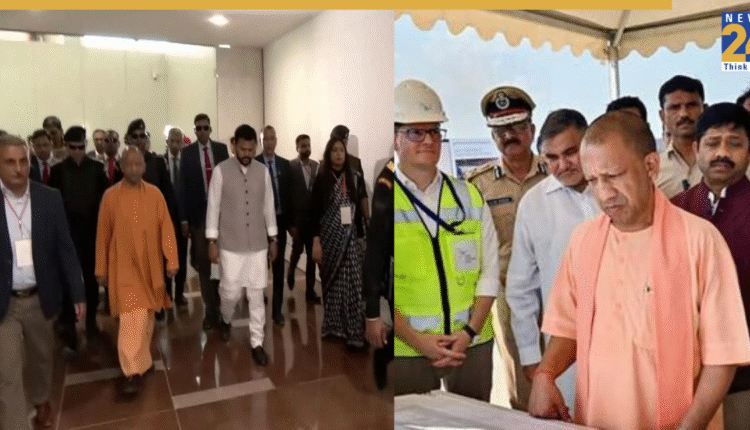Uttar Pradesh Chief Minister Yogi Adityanath, along with Union Civil Aviation Minister Ram Mohan Naidu Kinjarapu, inspected the Jewar Airport site and held a review meeting on Friday.
The Jewar Airport officially called Noida International Airport is a major greenfield project coming up near Jewar in Uttar Pradesh to serve the Delhi National Capital Region (NCR). The project is being developed under a public-private partnership model, with Zurich Airport International AG as the concessionaire.
Construction began in June 2022, and the first phase is targeted to become operational by December 2025. Although discussions for a second international airport in the NCR started around the 2010 Commonwealth Games, the project was delayed for more than a decade due to issues linked to the expansion of Delhi Airport.
In 2020, Zurich Airport International AG won the 40-year concession. Prime Minister Narendra Modi laid the foundation stone in November 2021. Development is being carried out by Yamuna International Airport Private Limited (YIAPL), a subsidiary of Zurich Airport International AG, while Tata Projects is responsible for engineering, procurement, and construction.
Located about 75 km from Delhi, it will be the region’s second international airport after Indira Gandhi International Airport, significantly improving connectivity for Western Uttar Pradesh. The airport is expected to become a major cargo hub, strengthening logistics, trade, and regional economic growth.
The project includes extensive connectivity plans such as six road links, a rapid rail-cum-metro system, and pod taxis. It will also feature a CAT-III B Instrument Landing System, enabling smooth operations in low-visibility conditions.
Jewar Airport is likely to drive large-scale real estate development and create nearly one lakh direct and indirect jobs. It aims to ease pressure on IGI Airport, enhance regional travel, and offer a modern passenger experience.
The project highlights “Swiss efficiency and Indian hospitality” and is designed with environmental goals, including net-zero emissions. Modern terminals, automated systems, and advanced technology form part of the master plan.
The airport will be built in four phases, with the first phase set to include two runways and future plans allowing expansion to six runways.
(With Agency Inputs)

